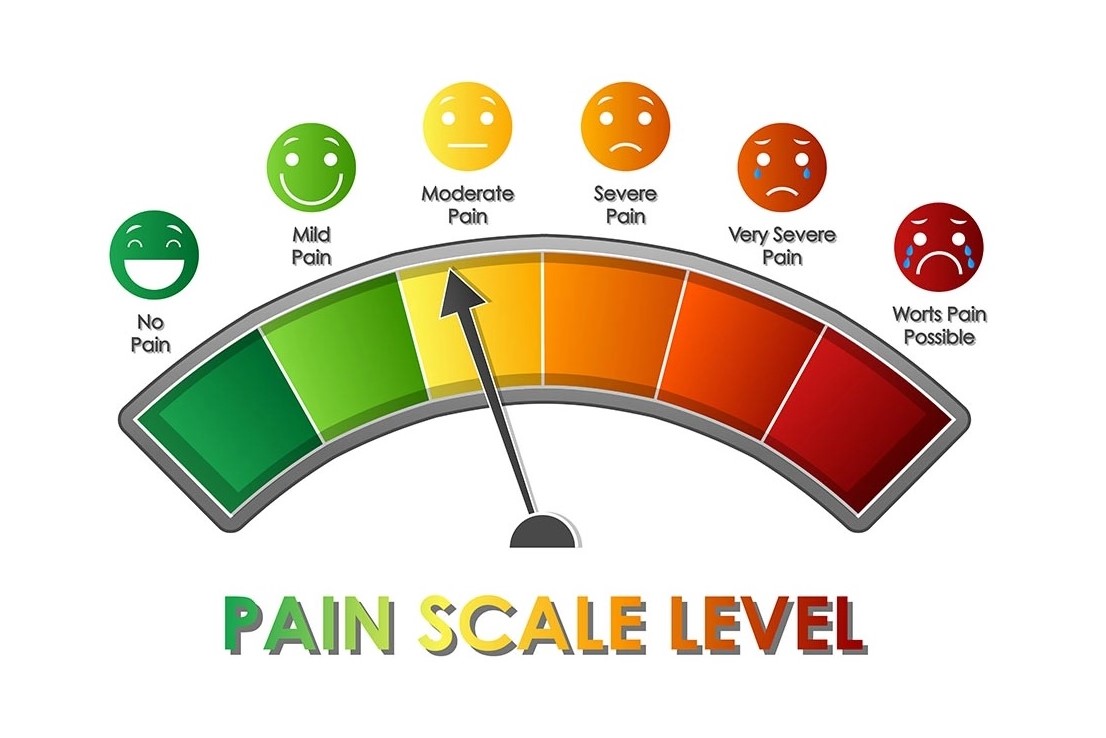
Pain assessment: which parameters and scales to use when rescuing and treating a patient
Pain: Rescuers and carers need to assess the cause, severity and nature of pain, as well as its impact on activities, mood, cognition and sleep
The assessment of the cause of acute pain (e.g. back pain, chest pain) is different from that of chronic pain.
The history should include the following information about the pain:
- Quality (e.g., burning, cramp-like pain, soreness, deep, superficial, piercing, stabbing pain)
- Severity
- Localisation
- Irradiation
- Duration
- Temporal characteristics (including type and extent of fluctuation and frequency of remission)
- Triggering and relieving factors
The patient’s level of function should be determined, focusing on activities of daily living (e.g., dressing, bathing) and work, occupational activities, and interpersonal relationships (including sexual activity).
The patient’s perception of pain may be more significant than the intrinsic physiological processes of the disease
It must be analysed what it means for the patient, with great attention to psychological problems, depression and anxiety.
Complaining about pain is more socially accepted than complaining about anxiety or depression, and appropriate therapy often depends on separating these divergent perceptions.
Pain and suffering must also be distinguished, especially in the cancer patient; suffering may be due to loss of function and fear of imminent death as much as actual pain.
In addition, it must be determined how much secondary gain (external circumstances, incidental benefits of a disease, e.g., sick days or compensation) may contribute to the related disability.
A personal or family history positive for the form can often be helpful in clarifying the contingent problem.
Consideration should be given to whether family members tend to perpetuate the chronic form (e.g. by constantly inquiring about the patient’s health).
Patients and sometimes family members and carers should be questioned about the use, efficacy and adverse effects of prescriptions, over-the-counter drugs and other treatments, and the use of alcohol or recreational or illicit drugs.
Pain intensity
Pain intensity should be assessed before and after potentially painful interventions.
In patients who can speak, self-assessment is the gold standard, while external signs of pain or distress (e.g. crying, grimacing, body oscillations) are secondary.
For patients who have difficulty communicating and for young children, non-verbal (behavioural and sometimes physiological) indicators may become the primary source of information.
Formal measurements include
- Verbal category scales (e.g. mild, moderate, severe)
- Numerical scales
- The visual analogue scale
For the numeric scale, patients are asked to assign a score from 0 to 10 to their pain (0 = no pain; 10 = “worst pain ever”).
For the visual analogue scale, patients have to make a mark representing the degree of their pain on a 10 cm long line where the left side is marked as “no pain” and the right side as “unbearable pain”.
The pain score is the distance, in millimetres, from the left end of the line.
Children and patients with low schooling or known developmental problems can select pictures from a list of faces, ranging from smiling to faces contorted by pain, or fruits of varying sizes, to express their perception of the severity of pain.
When measuring pain, the examiner should specify a time period (e.g., “on average how many times during the last week”).
Patients with dementia and aphasics
The assessment of pain in patients with pathologies affecting cognitive function, speech, or language (e.g., dementia, aphasia) may be difficult.
The presence of pain is suggested by facial grimacing, frowning, or repeated blinking of the eyes.
Sometimes the person accompanying the patient may report behaviour suggesting the presence of pain (e.g., sudden social withdrawal, irritability, facial grimacing).
Pain should be considered in patients who have difficulty communicating and who inexplicably change their behaviour.
Many patients who have difficulty communicating can communicate meaningfully when a suitable pain scale is used.
For example, the Functional Pain Scale has been validated and can be used in nursing home patients who have Mini-Mental State Examination scores of ≥ 17.
Patients treated with neuromuscular blockade
No validated tools are available to assess pain when neuromuscular blockade is used to facilitate mechanical ventilation.
If the patient is given a sedative, the dosage may be adjusted until there is evidence of consciousness.
In such cases, specific analgesics are not required.
If, however, the patient is sedated but continues to show signs of consciousness (e.g. blinking, some eye movement in response to a command), treatment for pain based on the degree of pain generally induced by the condition (e.g. burns, trauma) should be considered.
If a potentially painful procedure is required (e.g. turning a bedridden patient), pre-treatment with the selected analgesic or anaesthetic should be carried out.
Read Also:
Emergency Live Even More…Live: Download The New Free App Of Your Newspaper For IOS And Android
O.Therapy: What It Is, How It Works And For Which Diseases It Is Indicated
Oxygen-Ozone Therapy In The Treatment Of Fibromyalgia
Hyperbaric Oxygen In The Wound Healing Process
Oxygen-Ozone Therapy, A New Frontier In The Treatment Of Knee Arthrosis
Treating Pain With Oxygen Ozone Therapy: Some Useful Information


